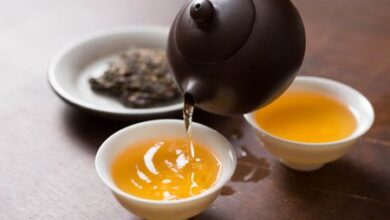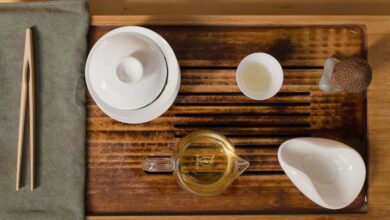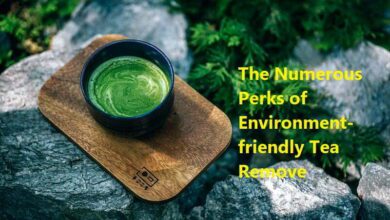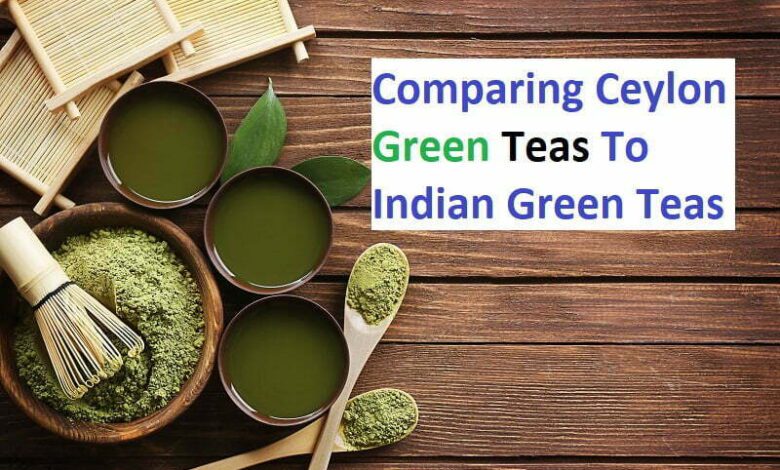
Comparing Ceylon Green Teas To Indian Green Teas
Comparing Ceylon Green Teas To Indian Green Teas A lot of the globe’s eco-friendly tea is generated in China as well as Japan. China is where eco-friendly tea come from.

Centuries earlier, prior to various other tea handling techniques were created, tea farmers just dried out tea leaves in the sunlight prior to saving them, and also this is just how environment-friendly tea was birthed. It acquired support swiftly in this component of the globe.
Also after black tea handling started, it really did not outsell eco-friendly tea.
Today, environment-friendly tea is still an incredibly popular drink selection. In Asia, environment-friendly tea is still without a doubt even more typically taken in than various other tea selections, and also a lot of the environment-friendly tea we consume in the Western globe is generated in China or Japan.
We ought to not mark down Sri Lanka as well as India when it comes to environment-friendly tea. Environment-friendly teas from Sri Lanka and also India are not as typical as Asian eco-friendly teas, as well as, in reality, numerous individuals do not also understand that these nations generate environment-friendly teas.
Sri Lanka
Ceylon environment-friendly teas have a complete body as well as are rather poignant with a malty or nutty taste. Ceylon environment-friendly teas have a strong as well as really brilliant taste.
The fallen leaves are darker prior to developing as well as make a darker alcohol, that is richer than a lot of Asian environment-friendly teas. Many Ceylon environment-friendly teas are called making use of the very same system as Chinese teas, with fallen leave forms like gunpowder, and so on.
Today, Ceylon is taken into consideration a relatively small eco-friendly tea manufacturer. As the need for eco-friendly tea expands, it’s most likely that even more eco-friendly tea will certainly be created in Sri Lanka. For those that are accustomed to Japanese and also chinese environment-friendly teas, Ceylon tea might be a shock due to the fact that its taste is so various.
India
India generates 2 ranges of eco-friendly tea, Assam as well as Darjeeling. Both of these teas have distinctive tastes as well as top qualities and also both are getting appeal.
Assam environment-friendly tea is rather brand-new to the market, however is getting market swiftly. Assam eco-friendly tea is usually average bodied tea that is really delicious.
Commonly an Assam environment-friendly tea will certainly make up without anger whatsoever, making it an excellent selection for amateur environment-friendly tea enthusiasts. Black Assam teas are utilized regularly in blends than as solitary teas, yet Assam eco-friendlies are not as commonly combined.
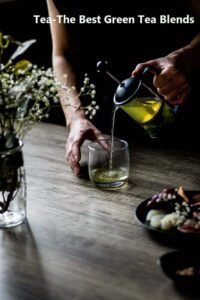
Darjeeling eco-friendly teas are expanded at elevations of 4,000-10,000 feet over water level, where it is amazing as well as there is generally a haze.
It is the elevation at which Darjeeling is expanded, the amazing haze as well as the best drain of the dirt right here that creates a tea with a distinctly muscadine taste. Many individuals define Darjeeling as being a really soothing tea.
Darjeeling black teas are extremely treasured by the British and also are taken into consideration to be among their favored five-o’clock tea. It was the British that started the initial tea nests in India, in order to contend with Asian tea manufacturing.
The Darjeeling area of India has actually ended up being identified with tea manufacturing. Numerous travelers take a trip up the Himalayan train to Darjeeling simply to take a peek at the stunning tea yards that can be located there.
Darjeeling is among the most significant tea creating areas worldwide, however just a tiny portion of the tea generated there is eco-friendly tea.
Darjeeling environment-friendly tea is really various from teas expanded anywhere else on the planet. It is milder than black Darjeeling tea as well as has a flowery arrangement.
Darjeeling eco-friendly tea is an extremely good mix of the verdant taste of a typical environment-friendly, yet with the Muscat taste that identifies all Darjeeling teas.
When made it is a much paler tea than Darjeeling black tea, with a brownish-yellow shade and also an aromatic fragrance.
Since both India as well as Sri Lanka are instead brand-new to environment-friendly tea manufacturing and also generate much less environment-friendly tea than Asia, you might have some trouble locating Ceylon and also Indian environment-friendly teas.
They are obtaining appeal and also will certainly end up being simpler to discover. Today, there are a handful of tea purveyors in the United States that lug these selections of eco-friendly tea.
You might have come to the verdict that you’re merely not an environment-friendly tea enthusiast if you’ve been disappointed with the taste of Asian eco-friendly teas.
Prior to you offer up on eco-friendly tea, which is one of the healthiest drinks you can consume alcohol, provide Ceylon or Indian environment-friendly teas a shot. They might be a little bit tough to locate, yet when you do, they are absolutely worth the problem.
Eco-friendly teas from Sri Lanka and also India are not as usual as Asian eco-friendly teas, as well as, in truth, numerous individuals do not also understand that these nations create environment-friendly teas.
As the need for eco-friendly tea expands, it’s most likely that even more eco-friendly tea will certainly be generated in Sri Lanka.
Darjeeling is one of the most significant tea generating areas in the globe, yet just a little percent of the tea created there is environment-friendly tea.
Since both India and also Sri Lanka are instead brand-new to eco-friendly tea manufacturing and also create much less environment-friendly tea than Asia, you might have some problem locating Ceylon as well as Indian environment-friendly teas.
Today, there are a handful of tea purveyors in the United States that bring these ranges of environment-friendly tea.
Tea: Varieties And Grades Of Green Tea
If you’ve ever shopped for green tea, no doubt you’re aware that there are a vast number of choices. There are green teas from many regions of the world, and many varieties, grades and flavors from each region.
Green tea was likely the first kind of tea. About 3000 years ago in China, people plucked fresh tea leaves and let them dry in the sun before storing them. In the 8th century,
tea processors began using the evaporation process, and by the 12th century, they began sautéing the leaves. Basically, green tea came about before tea processors learned the methods associated with processing black tea.
Even today, green tea is one of the teas left in its most natural state. Unlike black tea, green tea is unfermented. This lack of fermentation leaves the chlorophyll in the leaves, so that they retain their green color.
Green tea also retains more of its natural anti-oxidants as a result of being unfermented. This makes green tea a far healthier choice than black tea.
The natural anti-oxidants in green tea hold a great deal of power for protecting our health and preventing disease. Anti-oxidants are important to our health because they neutralize free radicals.
Free radicals are created in our bodies as a by product of digestion. These oxygen containing molecules damage our cells and DNA if left unchecked.
A diet rich in foods such as fruits, vegetables and other plant products like tea, helps rid our bodies of free radicals before they can damage our bodies.
In recent years, there has been an abundance of research showing that long term drinking of green tea can protect our bodies from many forms of disease, including cancer, heart disease and high cholesterol.
Green tea has also been shown to be an effective weight loss supplement as well as a natural way to help regulate insulin levels.
More research is needed, but it’s very likely that as time goes on we’ll find more and more health reasons for making green tea part of our everyday lives.
Classifying Green Tea
The many different varieties of green tea are classified, in part, by the method in which they are dried. The five methods of drying green tea include:
•Stir Frying – Fresh tea leaves are sauteed in a pan. This process is mainly used for export teas. Stir frying gives green a strong fragrance and taste. Some common varieties of green tea that are stir fried include gunpowder teas and Dragonwell teas.
•Roasting – Tea leaves are dried in a roast basket or roast chest. In most cases roasted teas are used as the basis for flower scented teas.
Roasting keeps the leaves intact and makes them appear as though covered in a white fluff. Monkey king teas are roasted.
•Semi-roast and semi fry – Sometimes the stir frying and roasting methods are combined. This method is used in order to retain the beautiful look of a roasted leaf combined with the strong fragrance and taste of stir fried tea.
•Solar drying – This is the age old method, whereby leaves are dried in the sun. Today these leaves are typically used as the basis for compressed teas. These are the “green tea cakes” you sometimes see.
•Steaming – The leaves are steamed at a very high temperature to dry them. The most famous steamed green tea is Sencha.
Within each of these varieties of green tea, there are also quality grades. It can be very difficult to determine, however, the quality of tea you’re buying, because each country has different grading methods.
China, which produces more green tea than any other country in the world, grades their green tea something like this.
First, teas for export are graded according to the age of the leaf and the finished shape of the leaf. These categories include gunpowder, imperial, young hyson, hyson, twankay, hyson skin, and dust.
Within each of these categories there are several quality grades; sometimes as many as nine grades within one leaf shape.
With all the complicated categories of green tea, it can be difficult to know which ones to dry. Understanding the different
drying methods and how they affect the flavor of the tea will give you a good start, as you can select varieties dried in the method that produces the taste you prefer.
However, when it comes to selecting the best quality of this variety, you have little to go on. There are a couple of ways to spot good quality tea:
•Form – Loose tea is higher quality than bagged tea. Whether it’s black tea, green tea or white tea, you can bet that the lowest quality leaves are the ones used in tea bags. For good tea, always buy loose tea.
•Price – If loose green tea is really inexpensive, it’s probably not very good quality. Shop around to get a good idea of a fair price for good loose green tea so that you can accurately judge prices.
•Reputation of Tea Company – One of the best ways to ensure that you get good tea is to buy from a tea company with a reputation for selling only the highest quality teas. This is particularly important when shopping online.
It’s true that there are many varieties of green tea. But, that’s what makes trying green tea so much fun! There’s almost no end to the many flavors and nuances you can find in the different varieties of green tea. You’re sure to want to try them all!
Three Thousand Teas
Camellia sinensis is the exotic sounding botanical name for a plant that many of us enjoy on a daily basis. It is the one plant that provides tealeaves. In fact, camellia sinensis gives us an astonishing three thousand different kinds of tea.
Many of the teas derived from camellia sinensis are exotic and limited to small regions of the world. Like grapes that produce fine wines,
the distinctive flavour and pedigree of these exotic teas is dependant on varying soil and weather conditions, plantation heights and geographic locations, as well as blending, processing and tea-making methods.
The types of tea are broadly categorized under three general groups: green tea, black tea, and oolong tea. White and Puerh are less common categories of tea.
Each type of tea has unique qualities and distinct characteristics derived from the processing methods used to make them.
Black Tea
Currently accounting for about seventy percent of the world’s tea consumption, black tea is processed using several hours of oxidation.
Popular varieties of black tea are Assam, Ceylon, Darjeeling, English breakfast, Irish breakfast and Keemun.
Oolong Tea
This is the least popular variety, contributing to less than three percent of the world’s tea consumption. Tea enthusiasts often refer to oolong as the “champagne of teas“.
The tea is partially fermented (oxidized), giving it a delicate taste and aroma comparable to that of fresh fruit or flowers. The caffeine content in oolong teas falls between that of green and black teas.
Green Tea
Unlike black and oolong teas, green tea is not fermented or oxidized, giving the leaves a vegetative or herbaceous quality.
The processing method simply involves rolling and heating the freshly harvested leaves. Green tealeaves generally produce a greenish-gold drink with a much lighter flavour than other types of tea. Green tea is highly valued for its medicinal qualities
White Tea
The most delicate of all varieties, white teas are imbued with a natural sweetness. White teas are hand processed and made from the youngest shoots without any oxidation. When brewed correctly, white tea produces very low amounts of caffeine.
Puerh Tea
This ancient black tea has roots that trace to China. Puerh tea is very strong with a deep, earthy flavour, although it is not bitter.
It is said that peurh tea possesses several important medicinal properties. Until 1995 it was illegal to import peurh tea into the United States. The production process is still a closely guarded state secret in China.
Different types of Green Tea
If you try to buy green tea in a supermarket – even in a very large one – the chances are that you’ll only find one kind of green tea: the kind with ‘green tea’ written on the packet.
The green tea that these packets contain tends to be of the absolute lowest quality, and so they are best avoided.
Instead, you should try to buy your tea from Chinese markets or food stores, or order it over the Internet, as then you will be able to choose from the full range of green teas.
So which different green teas are there? Well, the most common green tea in Western countries is low-grade Gunpowder – that’s the stuff you’ll generally find in the supermarket.
It is used because it is cheap, and stays fresher for longer than other green teas, because of the way it is rolled up into little balls.
The most popular green tea in China is Dragon Well, or Lung Ching, a bright green and quite expensive kind of tea. Many consider it to be the best green tea,
but because it is expensive and not very much is produced, it is prone to imitation – make sure you trust whoever you’re buying this tea from to sell you the real thing.
In Japan, green tea drinkers prefer Sencha, a sweeter kind of green tea. It is cheaper than Dragon Well, more the kind of tea you could drink every day, but none the worse for it.
Sencha is also more readily available over here than Chinese green teas tend to be, and there is a slightly cheaper version called Bancha as well.
The sweetest kind of green tea is Macha, the tea used in the Japanese tea ceremonies. It is very expensive and very nice, and tastes more like a luxury dessert than the everyday tea you’re probably used to – in Japan, it is a popular flavour of sweets and ice cream. If you ever get a chance to drink Macha, it’s well worth trying, because it really is the king of green teas.
tea,mei leaf,don mei,loose leaf tea,green tea,tea tasting,tea shopping,
high quality tea,chinese tea,japanese tea,tea ware,teaware,tea gifts,gong fu tea,gong fu brewing,how to makegreen tea,how to brew tea,
brewing tea,cup of tea,tea making,white tea,cuppa,tea time,tea leaves,tea recipe,water temperature tea,чайgreen tea recipe,китайский чайпуэрcamellia sinensis,мойчайteacup,teaceremony,instruction,how to,health benefits,oolong tea,
ceylon green tea for weight loss,ceylon green tea benefits and side effects,ceylon tea benefits and side effects,ceylon tea vs green tea,indian tea vs chinese tea,ceylon green tea caffeine,ceylon tea caffeine vs coffee,ceylon tea caffeine vs black tea,



